 |
 |
|
|
| Home | Events | Donations | GuestBook | Email Login |
|
|
 Celebrating Thirty Years of Punk Rock August 6 - 17, 2006 |
| << BACK | Wasted Home Page - 1 - 2 - 3 - 4 - 5 - 6 - 7 - 8 - 9 - 10 - 11 - 12 - 13 - 14 - 15 | NEXT >> |
| Tuesday - August 7th, 2006 - My Arrival in London |
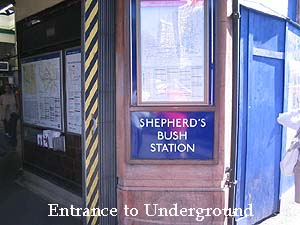 |
When I got to the Underground Station, I purchased a ticket to the Shepherd's Bush area. I boarded the train and rode for about forty-five minutes. I exited the train at the Station, being careful to "Mind the Gap" as I did so. Moments later, I was back up to the street level and was standing in Shepherd's Bush. Shepherd's Bush is a district of West London in the Borough of Hammersmith and Fulham, situated 4.9 miles (7.9 km) west of Charing Cross. Although it is primarily residential in character, its focus is the shopping area of Shepherd's Bush Green, which has a small shopping center with a supermarket, cinema and gym, and a large number of small, mostly independent shops. The name Shepherd's Bush is thought to have originated from the use of the common land here as a resting point for shepherds on their way to Smithfield Market in the City of London. Shepherd's Bush has been the stomping grounds for members of several important rock and roll groups. Members of The Sex Pistols, The Clash, The Who, and Bush grew up in the area, and more recently, so did Pete Doherty of The Libertines. The post-grunge band Bush take their name from Shepherd's Bush. I walked around Shepherd's Bush and the place was still pretty dead as it was barely after 6 AM. But the lack of people actually was very nice. I was able to walk around and see a lot of sights. |
|
Soon, I was standing in front of The Shepherds Bush Empire, which was designed and built by renowned architect Frank Matcham. The theatre first opened its doors in August 1903. In September 1953 it was sold to the BBC and converted into a television studio and broadcasting theatre. Over the next forty years the venue played a significant part in the history of British television. Popular shows such as 'Crackerjack', 'Hancock' and The Old Grey Whistle Test, were broadcast from the Empire. |
|
The Old Grey Whistle Test was a BBC2 music show that was first televised in September 1971 and ran until1987. It is recognized as one of the most influential music shows ever. In a list of the 100 Greatest British Television Programmes drawn up by the British Film Institute in 2000, voted for by industry professionals, The Old Grey Whistle Test placed 33rd. |
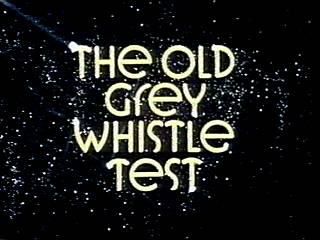 |
|
Her first show was opened by TV Smith and his band The Adverts. In the early 80s, Nightingale was replaced by a string of other hosts. In 1983, the show was retooled and it's name shortened to Whistle Test, which remained its title until it went off the air in 1987. The BBC vacated the building in 1992. It was taken over and, in 1994, again became the Shepherds Bush Empire. The Empire also featured live music concerts. |
|
After reading the list of upcoming concerts and looking around at the Empire, I decided to take a stroll through area's main focal point: Shepherd's Bush Green (or Shepherd's Bush Common). It is an approximately 8-acre triangular area of open grass surrounded by trees and roads lined with shops. The park has two tennis courts at its northwestern apex. There was also a play area for kids with a sandbox, a small slide, and a little jungle gym. It was all very nice. |
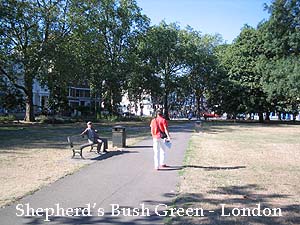 |
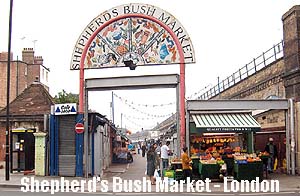 |
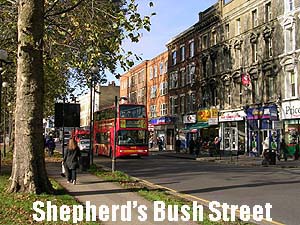 |
|
I watched as a woman and her daughter played fetch with their dog. He was a little black mutt of mixed breed. He chased his ball as if his life depended on it every time. It made me miss my dog Calista. |
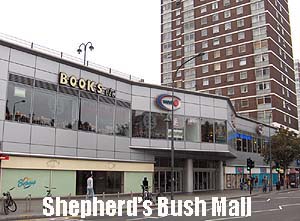 |
The pub next door controls the hostel. Through the window, I could see there were two people inside, a man and a woman. There was an opened door for deliveries, so I popped my head in and inquired as to the price of a bed for a night and when they would open. The guy was pretty rude, but informed me that it was £22 per night. The woman was a good bit nicer than the guy. She said that they opened at 8 AM, but I could sit and wait in the commons room if I would like. That sounded agreeable. So, she let me in and I dropped my gear. She went back upstairs and I took a look around. The place was kind of a mess. There were dirty dishes on the tables, trash on the floor, and the couches were all torn with stuffing coming out of them. On the plus side, there was a computer with Internet access. I dropped a £1 coin into the slot and got twenty minutes access, but it turned out to be for naught. Unfortunately, the machine could not run Java Script, so I couldn't check emails. And to make matters worse, there was a restrictive censorship program that would not allow a page to come up if there were any "objectionable" words or content. So, I was unable to check my MySpace or anything. I was pissed! (And not in the good English way that means drunk.) I surfed what I could until my time ran out. I decided to walk around and check out the other areas of the hostel to see if it was as bad as the Common Room. To my disappointment, it was. The place was a dump. I found the water closet, stopped, and dropped a deuce. Then, I walked out without flushing... |
| As much as it was a relief, it was also my commentary on the quality of the establishment. For the price they wanted, per person, per night, there was no way in Hell I was staying there. I grabbed my gear and headed out.
With a last look and a flip of the bird, I walked away from the hostel. I was sure to find something better… I wandered around the shops of Shepherd's Bush for a while doing a little window-shopping. There were all sorts of wonderful shops with all types of knick-knacks and curiosities, but regrettably, most of them were closed due to the early hour. I discovered an Internet Café that was open. There were plenty of machines and the assortment of pastries was very tempting. If you purchased food & beverage, you got free Internet access. I asked the proprietor of the fine establishment if his machines would have the same censorship program as at the hotel, and he assured me that it did not. That sealed the deal. I was decidedly hungry, so I got a fruit & yogurt smoothie and a chocolate croissant, grabbed a machine, and checked my email and MySpace. I dropped a few comments to some of my close friends and let everyone know that I had arrived safely. The smoothie was refreshing and delicious and the pastry was excellent. I felt rejuvenated and in much better spirit. I asked the manager for directions to the nearest Underground entrance and also if there were any inexpensive lodging facilities in the area. He let me know that there were a few Bed & Breakfasts in the area, but most were still closed at the early hour. I thanked him, left him a nice tip, and went on my way. |
|
I followed the directions to the Shepherd's Bush Underground Station and hopped a train heading towards the center of London. I ended up getting off at the Marble Arch Station. |
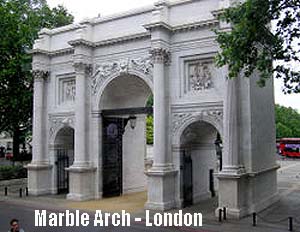 |
| It was touted as the best value in the London sightseeing industry. I decided that the tour would be a great idea at that time, because it would let me rest, put down my bags, and so some sightseeing. It would also help me get an understanding of the city's layout. I bought a ticket for the tour at the stall near the Underground Station. But, because the tour started near Hyde Park (on the other side of the traffic circle), I had to go back down into the Station and take a winding, urine-soaked tunnel under the street. There was even a homeless guy in a camouflage shirt asking for spare change. |
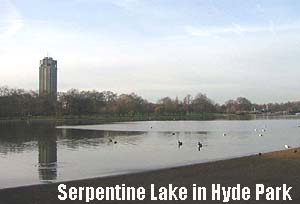 |
I came up the stairs from the tunnel and was looking at Hyde Park, one of the Royal Parks of London. (http://www.royalparks.gov.uk) It was beautiful. Hyde Park covers 350 acres (1.4 km²), and is one of the largest parks in central London. It is divided in two by the Serpentine Lake, which was formed in 1730 when Queen Caroline, wife of George II, ordered the damming of the River Westbourne. |
|
There was a middle-aged man standing in the Speaker's Corner. He was going on about his opposition to Great Britain being involved the U.S.-led occupation of Iraq. I only watched him for a few moments before I queued up with the rest of the crowd waiting to get on the next bus. The Big Bus Tour Of London Begins... |
|
When the next bus arrived, I grabbed a seat at the rear of the upper level, dropped my bags, and got my camera ready. It was good to sit and I relaxed and enjoyed the ride.
Our guide for this leg of the tour was a pleasant blonde woman named Amy. She was well versed on the history of the city and its famous landmarks. She was also very funny. |
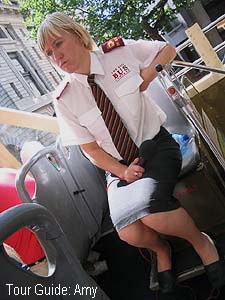 |
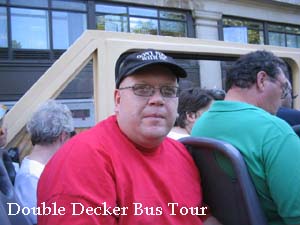 |
In the medieval period the City was the full extent of London (as distinct from the nearby, but then-separate, village of Westminster, which became the City of Westminster), but the term London now refers to a much larger conurbation containing both 'cities'. The City of London is still part of London's city center, but apart from financial services, most of London's metropolitan functions are centered on the West End.
The City of London has a resident population of under 10,000 but a daily working population of 311,000. Its Latin motto is "Domine dirige nos" which means "Lord, guide us". The Big Bus Tour takes visitors to all the great sites in the Greater London Area. One of the first places we visited was Grosvenor Square (pronounced "Grove-nuh Square"). It is a large garden square in the exclusive Mayfair district. It is the centerpiece of the Mayfair property of the Dukes of Westminster, and takes its name from their surname, "Grosvenor." The Grateful Dead referenced Grosvenor Square in the opening line of their 1974 song Scarlet Begonias. In March 1968, Grosvenor Square became, for a few hours, a battleground as 80,000 protestors against the Vietnam war besieged the American Embassy. The Rolling Stones' Mick Jagger & Keith Richards wrote the song Street Fighting Man after seeing the riot that ensued in the square. The central garden is now a public park managed by The Royal Parks. |
| Nearly all of the houses were demolished during the 20th century and replaced with blocks of flats in a neo-Georgian style, hotels, and embassies.
Grosvenor Square has been the traditional home of the official American presence in London since John Adams established the first American mission to the Court of St. James's in 1785. During the Second World War, Dwight D. Eisenhower established a military headquarters at 20 Grosvenor Square, and during this time the square was nicknamed "Eisenhower Platz". The United States Navy continues to use this same building as its headquarters for Europe and West Africa.Access to the western side of the square is severely restricted by the very obvious security measures around the U.S. Embassy, a large and architecturally significant modern design by Eero Saarinen, completed in 1960. The Embassy was a controversial insertion into a mainly Georgian and neo-Georgian district of London. It is a nine-story building, of which three are below ground. A large gilded aluminium Bald Eagle with a wingspan of over 11 metres (35 feet) is situated on the roof of the chancery building, making it a recognisable London landmark. In September 2002 a man was arrested at Stockholm's Västerås Airport trying to board Ryanair Flight 685 with a loaded gun. Media reports claimed that the man was planning to hijack the aircraft and crash it into the American embassy in London, using the rooftop eagle to identify it from the air. This Embassy is the only U.S. Embassy situated on land that is not owned by the U.S. government. The land is leased from the Duke of Westminster who, when asked if he would sell the land outright, responded that he would if the U.S. Government would return the land that belonged to his family in the U.S. before it was confiscated during the Revolutionary War. The request was denied. A statue of Franklin D. Roosevelt, sculpted by Sir William Reid Dick, stands in the square, as does a later statue of Eisenhower, sculpted by Robert Lee Dean and unveiled on January 23, 1989. I made a quick mental note on the location of the Embassy in the event of any bad happenings. (It is always good to know where you can hide if you somehow unwittingly instigate an international incindent.) |
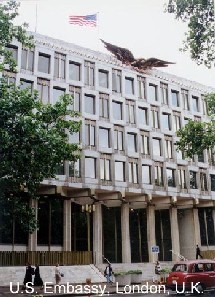 |
| Next: The Big Bus Tour Continues... |
| << BACK | Wasted Home Page - 1 - 2 - 3 - 4 - 5 - 6 - 7 - 8 - 9 - 10 - 11 - 12 - 13 - 14 - 15 | NEXT >> |
| Home | Events | Donations | GuestBook | Email Login |
|
|